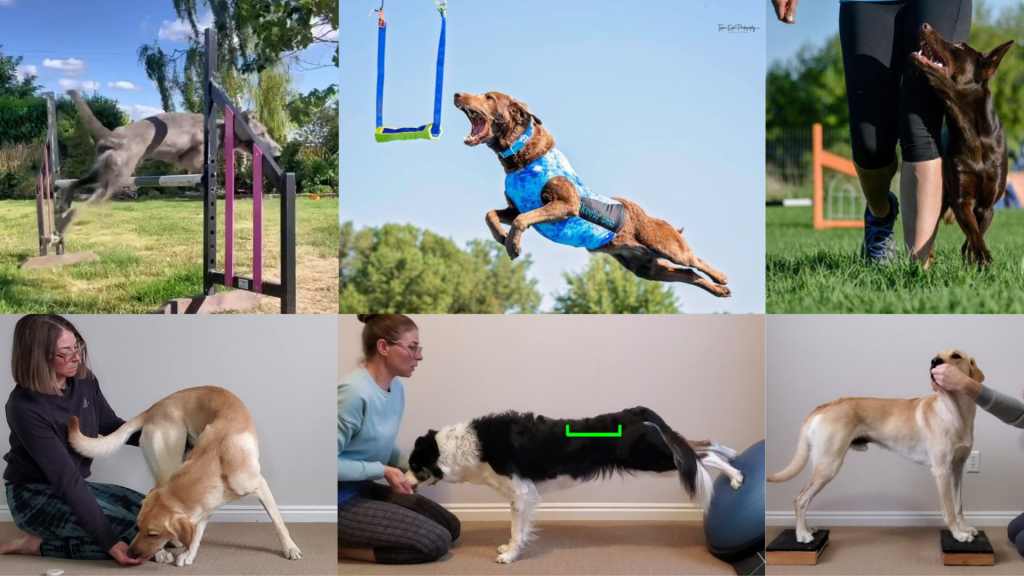The Role of Exercise in Pet Training

The Multifaceted Role of Exercise in Pet Training
Exercise is not merely a tool for physical health; it plays a crucial role in pet training as well. The connection between a pet’s activity level and their ability to learn and respond can be profound. Understanding this relationship can enhance the training experience for both pets and their owners.
Engaging pets in regular exercise has numerous benefits. These advantages extend beyond basic physical conditioning, influencing behavior, mental agility, and social interaction. For instance:
- Improved Obedience: Regular activity can help pets focus and follow commands better. A dog that has had an adequate walk is often more relaxed and willing to listen to its owner during training sessions. Activities like agility courses or obedience classes not only exercise but also engage a dog’s brain, making learning commands more effective.
- Enhanced Socialization: Exercise in group settings promotes interaction with other animals and humans. In Nigeria, gatherings at pet-friendly events or training camps can foster a sense of community among pet owners while allowing dogs to socialize. For cats, leash training can encourage outdoor exploration and interaction with safe environments.
- Reduced Anxiety: Physical activity reduces stress and helps manage behavioral issues. Pets that lack exercise often display destructive behaviors, anxiety, or excessive barking. Engaging them in playtime, such as fetch or tug-of-war, can alleviate these stresses and provide a constructive outlet for their energy.
In Nigeria, where many people own pets as beloved family members, incorporating local activities is essential. Short walks in bustling neighborhoods or games of fetch in public parks offer excellent opportunities for physical exertion. Moreover, swimming in local rivers or lakes is a fantastic way to exercise dogs, tapping into their natural instincts while keeping them cool in the tropical heat.
Additionally, community events such as dog shows or pet parades can provide not only exercise but also a fun way for pets to meet others. Such gatherings encourage local understanding of proper pet care and exercise routines. Creating engagements that reflect Nigerian culture can harness community spirit while promoting pet welfare.
As you read this article, you’ll uncover various methodologies and exercises tailored for different pets. Whether you have a playful dog or a curious cat, the right approach to exercise, whether through organized activities or casual play, can elevate your training sessions and strengthen your bond with your furry companions. Embracing exercise as part of the training regimen is crucial, as it provides not just benefits for the pets but also immense joy and satisfaction for the owners.

CHECK OUT: Click here to explore more
Benefits of Exercise in Facilitating Learning
Understanding the profound impact of exercise on pet training can transform the way pet owners approach their training routines. One of the most significant benefits of regular exercise is the enhancement of a pet’s overall mental and physical responsiveness. When pets engage in consistent physical activity, not only do they develop stronger muscles and better endurance, but they also exhibit improved cognitive function. This improvement is particularly noticeable in dogs, whose brains crave stimulation as much as their bodies need exercise.
The physiological changes that occur during exercise prepare a pet’s body and mind for learning. The increased circulation boosts brain function, ensuring that commands are processed more efficiently. This natural boost leads to quicker responses and greater retention of training commands. Moreover, a tired pet is often a well-behaved pet, which can significantly enhance the training environment. When a dog has expended its energy through structured play, it becomes easier for them to concentrate during training sessions. This correlation between exercise and focus highlights the importance of incorporating an active lifestyle into a pet’s daily routine.
Engaging Activities for Different Pets
When contemplating exercise routines, it’s essential to consider the unique needs of each type of pet. Here are some engaging activities tailored for dogs and cats to promote their physical health while reinforcing training principles:
- Structured Walks: Regular walks around the neighborhood not only serve as essential exercise but also provide dogs with the opportunity to explore their surroundings. Aside from physical benefits, dogs learn to respond to commands like “heel” and “sit” in varied environments.
- Agility Training: Creating an agility course with local materials can stimulate both physical exertion and mental challenge for dogs. This combination encourages quick thinking and helps dogs learn to follow commands promptly.
- Interactive Toys: For cats, using puzzle toys that require them to engage in physical activity can keep them agile and mentally alert. These activities not only satisfy their play instincts but also offer a different method of reinforcement as they learn through play.
- Social Playdates: Organizing play dates with other pets allows both dogs and cats to exercise in a social setting. This interaction helps them learn social cues and practice obedience commands amid distractions.
In Nigeria, where climate and lifestyle can vary widely, adapting these activities to fit local settings is crucial. For example, making use of shaded park areas or taking advantage of cooler evenings for walks can make exercise more comfortable for pets. Moreover, community-based sports events focusing on pet training can encourage collective participation, fostering stronger community ties while ensuring pets remain active.
Ultimately, the integration of exercise into the pet training regimen is not merely beneficial—it is essential. A balanced approach that harmonizes physical activity with training commands leads to well-rounded pets and satisfied owners. Letting exercise pave the way for effective pet training opens doors to countless training methods, each designed to enhance the bond that pet owners share with their beloved animals.
| Advantages | Impact on Training |
|---|---|
| Improved Behavior | Regular exercise helps to alleviate behavioral issues in pets such as barking, chewing, and digging. |
| Enhanced Bonding | Training sessions that include exercise strengthen the bond between pet and owner, fostering trust and cooperation. |
| Increased Focus | Daily physical activity can improve a pet’s focus during training, making it easier to learn new commands and tricks. |
| Health Benefits | Exercise not only enhances physical health but also boosts mental well-being, leading to a happier pet. |
Exploring the role of exercise in pet training reveals a multifaceted approach to developing well-behaved companions. One powerful advantage is the improvement in behavior; pets that receive regular physical challenges tend to exhibit reduced anxiety and stress levels. Furthermore, enhanced bonding during training sessions promotes a strong, trusting relationship, crucial in effective communication. Beyond behavior, it’s evident that with increased focus, pets gain attention during learning, making them more receptive to commands. Finally, engaging pets physically not only guards their health but contributes to their overall happiness, enriching their lives significantly. The exciting intersection of exercise and training warrants deeper exploration for pet owners eager to enhance their companions’ lives.
ADDITIONAL INSIGHTS: Expand your understanding here
The Connection Between Exercise and Behavioral Issues
One of the most compelling reasons for integrating exercise into pet training is its profound effect on behavioral issues. A significant number of behavioral problems, such as excessive barking, destructive chewing, and hyperactivity, can often be alleviated through regular exercise. Many pet owners may find themselves overwhelmed by their pets’ restless energy, which can result in frustrating behavioral tendencies. Engaging in scheduled exercise routines can counteract these issues by channeling this boundless energy into positive activities.
Recent studies have shown that pets who receive adequate physical stimulation exhibit fewer signs of anxiety and depression. In Nigeria, where many families live in urban centers, pets may find themselves cooped up in apartments for extended periods. This limited space can heighten stress levels, leading to a breakdown in communication between pets and their owners. By providing an outlet for energy through exercise, pets are less likely to engage in problematic behavior, thus creating a more harmonious environment for both pet and owner.
Strengthening the Human-Pet Bond Through Shared Activities
Exercise has the unique ability not only to enhance training but also to solidify the relationship between pets and their owners. Engaging in physical activities together builds trust and understanding the bond that pet owners forge with their furry companions. Activities such as fetch games, hiking, or even simple jogs can serve as opportunities for owners to connect with their pets on a deeper level. The enthusiasm and joy pets display during these exercises can further inspire owners to actively participate in their pets’ learning process.
Consider community dog events across Nigeria, which have gained popularity in recent years. These gatherings provide an excellent stage for social exercise, where pets can engage in both physical activities and training workshops. Activities like obedience competitions or agility trials not only promote physical fitness but also create a platform for owners to observe their pets’ learning progression alongside other animals. Such community initiatives foster a sense of belonging for both pets and their owners, enhancing their overall experience and engagement.
Furthermore, animals exposed to a variety of environments—such as parks, beaches, and nature trails—during exercise are likely to become more adaptable and less fearful of unfamiliar situations. This adaptability is instrumental in training because it encourages responsive behavior in diverse settings. For instance, a dog trained in a busy park will be more likely to follow commands even with distractions around, strengthening focus during training sessions.
The Role of Structured Exercise in Specific Training Goals
Moreover, incorporating structured exercise can directly impact specific training goals. For example, if a pet owner aims to improve a dog’s recall skills, incorporating fetch into regular play can be a fun and effective training tool. The back-and-forth nature of the game not only ensures the dog is getting the physical workout it needs, but it also reinforces the concept of returning to the owner with the toy, enhancing the recall command in a playful context.
In essence, the role of exercise in shaping a pet’s behavior, enhancing training outcomes, and enriching the pet-owner relationship cannot be overstated. In Nigeria, where vibrant communities support animal lovers through various pet-focused activities, the integration of exercise offers a clear advantage. By embracing active routines tailored to their pets’ needs, pet owners can cultivate better trained, happier, and more engaging companions.
ADDITIONAL INSIGHTS: Expand your understanding here
Conclusion: Embracing Exercise for Optimal Pet Training
In conclusion, the integral role of exercise in pet training cannot be overlooked. Regular physical activity not only helps mitigate behavioral issues that arise from pent-up energy but also fosters a stronger emotional bond between pets and their owners. The connection formed during shared exercise activities, such as fetch or communal dog events, provides both social and physical benefits, allowing pets to thrive in various environments while also enhancing their training outcomes.
Furthermore, structured exercise routines serve as effective tools for achieving specific training goals, such as improving recall and responsiveness. Engaging in varied activities encourages adaptability and focus, equipping pets with the skills needed to navigate distractions and unfamiliar situations with confidence. In urban settings, particularly in Nigeria, where living spaces may be limited, regular exercise presents an essential outlet for pets’ energy and a means of enriching their overall well-being.
As pet owners increasingly recognize the importance of exercise in their companions’ lives, they contribute to the development of happier, healthier, and more well-trained pets. By making exercise a priority, owners can ensure not only a fulfilling life for their pets but also a more enjoyable and lasting relationship. The journey of pet training, supported by physical activity, is one that promises endless rewards for both animals and their human partners. By embracing this holistic approach, we stand to transform our pets into not only better companions but also cherished family members.


